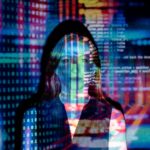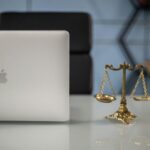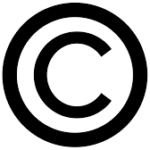copyright
OpenAI’s Sora & the Role of the US Copyright Office
Mar. 5, 2024—By Bart Mueller When Shira Perlmutter took office as the 14th Register of Copyrights in October 2020, many saw the US Copyright Office as relatively unimportant—a group of glorified librarians tucked away in a sleepy back room of the Library of Congress.[1] Four years later, this could not be farther from the truth. On February...
Universal Music Group and TikTok’s Contractual Standstill
Feb. 13, 2024—By Dana Branstetter TikTok legally adds music from artists as sounds on its platform through licensing agreements,[1] typically through negotiations with rights holders, such as the labels or publishing companies to which artists sign.[2] In exchange for providing the music to TikTok users, the owner of the music’s rights receives the royalties in accordance with...
Just a Sample Can’t Be So Bad: Adopting the De Minimus Standard for Sampling Music in the Modern Era
Jan. 29, 2024—By Paul Gerstle Sampling has long been a popular medium by which artists can express themselves by borrowing bits of another artist’s song for their own purposes. However, use of another artist’s work can cause legal issues. After all, the original song is the property of another, and the new artist cannot simply appropriate that...
(Un)fair Use?: Understanding the New York Times’s Lawsuit Against Microsoft and OpenAI
Jan. 8, 2024—By Jay Eischen The nascent generative artificial intelligence (AI) industry—OpenAI in particular—has dominated headlines for more than a year. Boardroom drama, hopes of explosive productivity growth, and cautionary tales of existential risks have intermittently gripped the public consciousness.[1] Most recently, however, the legality of OpenAI’s use of copyrighted materials in training their AI models has...
©ancelling Dr. Seuss
Nov. 28, 2023—Cathay Y. N. Smith | 26 Vand. J. Ent. & Tech. L. 73 (2023) Dr. Seuss Enterprises announced in March 2021 that it would no longer license or publish six of its children’s books because those books portrayed people in racist or culturally stereotypical ways. Since then, the public has learned through news reports and...
Copyright’s Lost Art of Substantial Similarity
Nov. 27, 2023—Sandra M. Aistars | 26 Vand. J. Ent. & Tech. L. 109 (2023) Three copyright doctrines focus more than any others on the contributions of authors to visual artworks: originality, substantial similarity, and fair use. Questions regarding the aesthetics of works of authorship filter into judicial determinations under each of these doctrines. This Article comments...
Orthogonal Purposes and Differing Motivations: Post-Warhol Fair Use Implications of “Who Is the Bad Art Friend?”
Nov. 7, 2023—In October 2021, the internet exploded over Robert Kolker’s New York Times article, “Who Is the Bad Art Friend?” For an instant of online fixation, the tale of Dawn Dorland Perry and Sonya Larson enamored the online masses. In Samuel Fujikawa's ('25) new post, explore how the District Court of Massachusetts revived the tale in Larson v. Perry, one of the first applications of the Supreme Court’s ruling in the Andy Warhol Foundation for the Visual Arts v. Goldstein,
Reinterpreting Repeat Infringement in the Digital Millennium Copyright Act
Jun. 28, 2023—Hunter McGhee | 25 Vand. J. Ent. & Tech. L. 483 (2023). In 1998, Congress passed the Digital Millennium Copyright Act, which aimed to balance the growth of the internet with the enforcement interests of copyright holders. In exchange for immunity from third-party infringement, the DMCA imposes certain conditions on internet and online service providers....






